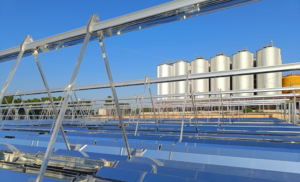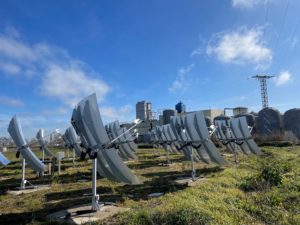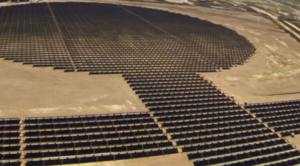

India: Solar Drying System with Vacuum Tubes Pays off within the First Year
Indian company ACME Jelly Products has been successfully showcasing the use of solar thermal dehydration systems of agro-products since October 2011. The company, which is located near Ahmedabad in Gujarat state in western India, is one of the rare Indian examples of vacuum tube collector projects that use metal heat pipes filled with glycol-supplying, water-based fan coil units. After two years in operation, the owner of ACME, Jaykishan Parmar, has confirmed that the system paid off within the first year because dried vegetables are sold at a much higher price than fresh ones.
“We never bothered with subsidies,” says Parmar, owner of the plant. “The INR 2.5 million investment – around EUR 30,000 – has paid off within the first year.” Parmar was convinced that solar energy had a greater role to play in combating rising fuel prices, which is why he started studying the best-performing and longest-lasting system among the different solar thermal technologies.
ACME’s system, which was imported from China and has a collector field of 72.6 m2, has the capacity to process close to 500 kg of agricultural products during an average sunny day. ACME processes a great variety of agro-products:
- Fruits, such as bananas, mangos, pineapples or oranges, etc
- Vegetables, such as bitter gourds, tomatoes, mushrooms, broccoli, etc
- leafy vegetables, such as coriander, fenugreek, mint, curry, etc
- spices, such as turmeric, chilli and cardamom, etc
As an example, Parmar says that fresh tomatoes cost around 4 INR/kg during winter time. After dehydration and adding labour and overhead costs, it is sold for nearly 300 INR/kg. Similarly fresh chillies cost around 10 INR/kg and are available almost 200 days a year. After dehydration, they cost 400 INR/kg. “The high production quality is creating great demand,” explains Parmar. “With pizza outlets multiplying in the country, the demand for dried tomatoes and mushrooms is increasing rapidly.”
The solar thermal collectors are used to heat the fluid, which is then circulated to water-based fan coil units. These units heat up the fresh air to dehydrate the products stored in trays. After the hot air has removed some of the product’s moisture, it leaves the drying chamber through an exhaust system, while more fresh air is brought in to be heated up again and dry the product even more. During sunny days, the system is powered directly by sunlight without a back-up energy source or heat storage. At night, however, the electrical back-up will kick in.
Parmar also says: “The desirable temperature for dehydration is between 50 and 55 °C, making single-glass evacuated tubes with metal heat pipes an ideal fit. The temperatures achieved in concentrated solar systems, however, are very high and harden the food surface during dehydration. Also, concentrated solar systems require skilled labour and tracking mechanisms, which adds to the investment and results in a longer payback time.” Parmar emphasises that vacuum tubes with metal heat pipes reach operating temperatures of 98 °C – which is more than can be said about Chinese vacuum tubes without a heat pipe.
Gujarat state is one of the leading states with more than a dozen agricultural solar drying systems. Overall, solar thermal drying is still an underrated technology across India, considering the fact that 70% of country’s workforce is employed in businesses related to agriculture.
More information:
http://www.acmejelly.com


